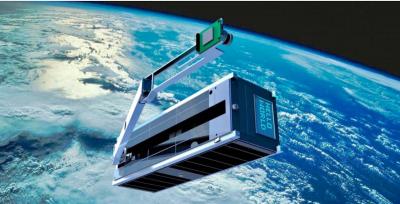NASA has announced that a small satellite, designed and built by Brown University students, will ride on a future rocket launch.
 Image credit: Brown University
Image credit: Brown University
The new satellite, dubbed PVDX (Perovskite Visuals and Degradation eXperiment), is a cubesat ' a class of miniature satellites ideal for doing low-cost science experiments or technology demonstration in space. Members of Brown Space Engineering (BSE), a student group, worked for three years to develop a mission plan and proposal for NASA's Cubesat Launch Initiative, which uses auxiliary cargo space on rockets to send cubesats to space.
'We're planning on flying 30 perovskite cells of varying compositions and comparing them to gallium arsenide cells, which are pretty standard in aerospace applications,' said Lauren Adachi, technical lead and co-president of BSE. 'We'll be flying both kinds of cells so we'll be able to do a side-by-side comparison of how they perform.'